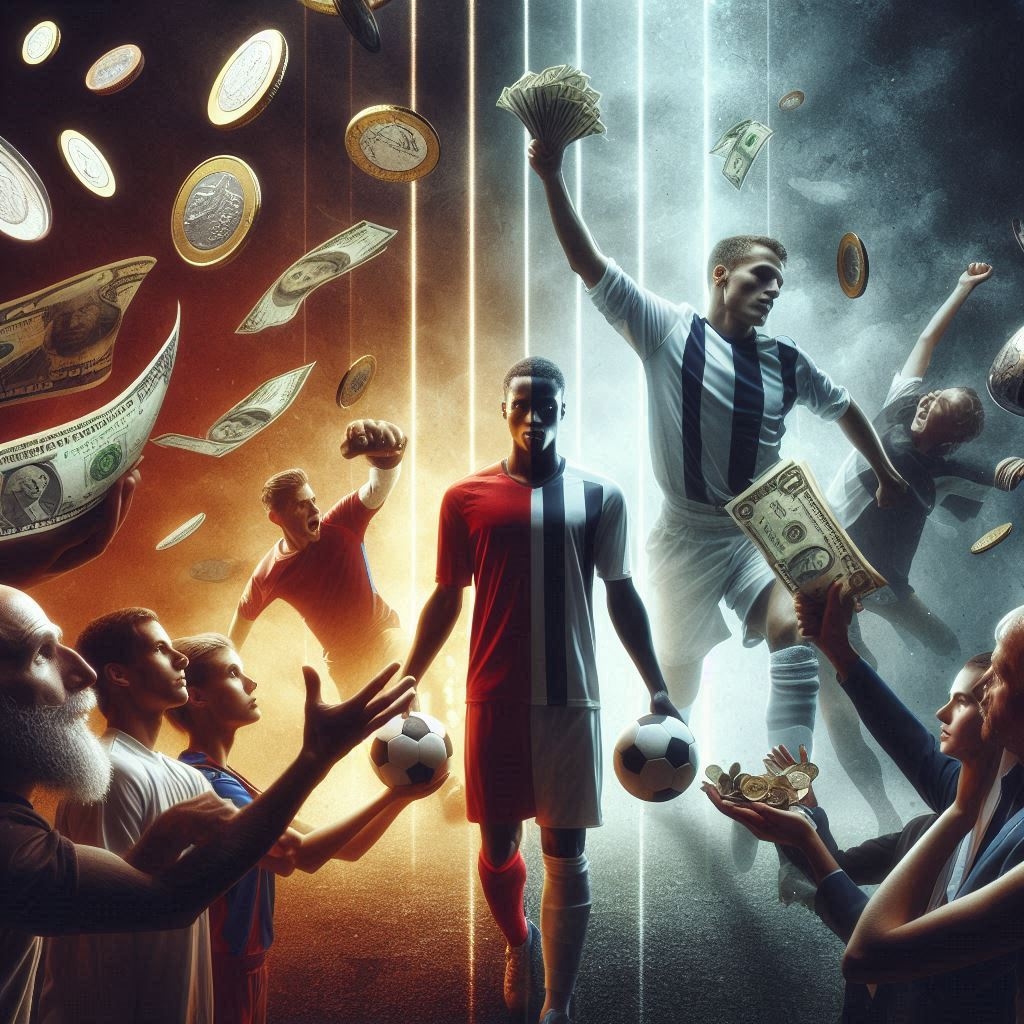Should Semi-Professional Players Be Paid?
The Payment Issue
In the realm of sports, the debate over whether semi-professional athletes should be compensated for their efforts remains a contentious issue. These athletes often exhibit remarkable skill and dedication, yet they do not enjoy the same financial rewards as their fully professional counterparts.

The Current State of Semi-Professional Sports
Balancing Passion and Profession
Semi-professional sports serve as a critical bridge between amateur and professional levels. These athletes often possess a high level of skill and dedication, yet do not receive the same financial benefits as their fully professional counterparts. This raises the question – should semi-professional players receive compensation for their efforts?
Arguments for Paying Semi-Professional Players
Recognition of Effort and Talent
Acknowledging Dedication
Semi-professional athletes dedicate significant time and effort to their sport, often balancing training and competition with other employment. Providing financial compensation would recognize their commitment and talent, allowing them to focus more on their athletic pursuits.
Enhanced Performance and Development
Investing in Success
Financial support can lead to better training facilities, coaching, and medical care, which in turn can enhance player performance and development. This investment can contribute to the growth of the sport overall, as higher-quality games attract more fans and sponsorships.

Arguments Against Paying Semi-Professional Players
Financial Strain on Clubs
Economic Challenges
Smaller clubs may struggle to afford paying semi-professional athletes, potentially leading to financial instability. This could result in clubs folding or reducing their involvement in semi-professional leagues, negatively impacting the sport’s grassroots development.
Dilution of Professional Status
Maintaining Prestige
Paying semi-professional athletes might blur the line between semi-professional and professional levels, potentially reducing the prestige and exclusivity of being a professional athlete. This could have implications for the motivation and aspirations of amateur athletes aiming to go pro.

Long-Term Implications
Positive Impacts
Increased Talent Pool
Offering financial compensation to semi-professional athletes could attract more talented individuals to the sport, expanding the talent pool and raising the overall standard of competition. This could lead to a more vibrant and competitive sports environment.
Greater Fan Engagement
Building a Loyal Following
High-quality performances from well-supported semi-professional athletes can attract more fans, leading to increased ticket sales, merchandise revenue, and sponsorship opportunities. This can create a positive feedback loop, further boosting the sport’s popularity and financial health.
Negative Impacts
Financial Challenges
If clubs face financial strain from paying semi-professional athletes, the long-term sustainability of the sport could be jeopardized. Financial challenges might lead to a reduction in the number of semi-professional clubs, limiting opportunities for aspiring athletes.

Potential for Inequality
Creating Disparities
Introducing payments at the semi-professional level could create disparities between clubs with different financial resources. Wealthier clubs might be able to attract and retain top talent, while less affluent clubs struggle to compete, leading to an imbalance in the league.
Impact on Player Motivation
Enhancing Commitment
Incentivizing Dedication
Financial compensation could increase the commitment of semi-professional athletes, as they would be more motivated to excel in their sport. This could lead to higher levels of performance and a more competitive environment.
Potential for Complacency
Risks of Payment
On the flip side, paying semi-professional athletes could result in complacency among some players, as they may feel less driven to reach the professional level. Balancing financial incentives with motivational strategies will be crucial.
Economic Impact on Communities
Boosting Local Economies
Supporting Growth
Compensating semi-professional athletes can have a positive economic impact on local communities, as increased attendance at games and related events can boost local businesses and create job opportunities.
Financial Risks
Sustainability Concerns
However, the financial strain on clubs could have adverse effects on local economies if clubs are unable to sustain operations and are forced to fold.
Ethical Considerations
Fairness in Compensation
Equality in Sports
Ethical considerations play a significant role in the debate. Ensuring fair compensation for all athletes, regardless of their level, can promote equality and fairness within the sports community.
Managing Expectations
Realistic Goals
Balancing ethical considerations with financial realities is essential to ensure that expectations are managed and athletes are treated fairly.

Impact on Youth Development
Inspiring Young Athletes
Role Models
Paying semi-professional athletes can inspire young athletes by providing them with role models who demonstrate that hard work and dedication can lead to financial rewards.
Ensuring Opportunities
Access and Affordability
It is important to ensure that financial incentives at the semi-professional level do not create barriers for young athletes from less affluent backgrounds.
Conclusion
The decision to pay semi-professional athletes is complex and multifaceted. While it can provide recognition and support for dedicated players, it also poses financial challenges and potential inequalities. Balancing these factors is crucial for the sustainable growth and development of semi-professional sports. Ultimately, finding a middle ground that acknowledges the efforts of semi-professional athletes while ensuring the financial stability of clubs will be key to the future of semi-professional sports.
Join the Discussion
The debate over whether semi-professional athletes should be paid is multifaceted and deeply impactful for the future of sports. Do you believe that compensating semi-professional players is a step in the right direction, or do you think it could lead to unintended consequences for clubs and athletes alike?















20 Hour Flight to Australia Is The Expensive Trip Worth It
[…] SydneyBeyond the Opera House and Harbour Bridge, Sydney’s neighborhoods like Newtown and Surry Hills offer eclectic dining, shopping, nightlife and sports. […]